
Playing around with new ideas for the Feb. 29 class at Kalamazoo Book Arts. We’ll create leaves and feathers as well as learning how to make these friendly creatures. They look great perched on a window sill, small rock or even a houseplant!
Encaustigraphic teaching information, with class photos

Playing around with new ideas for the Feb. 29 class at Kalamazoo Book Arts. We’ll create leaves and feathers as well as learning how to make these friendly creatures. They look great perched on a window sill, small rock or even a houseplant!
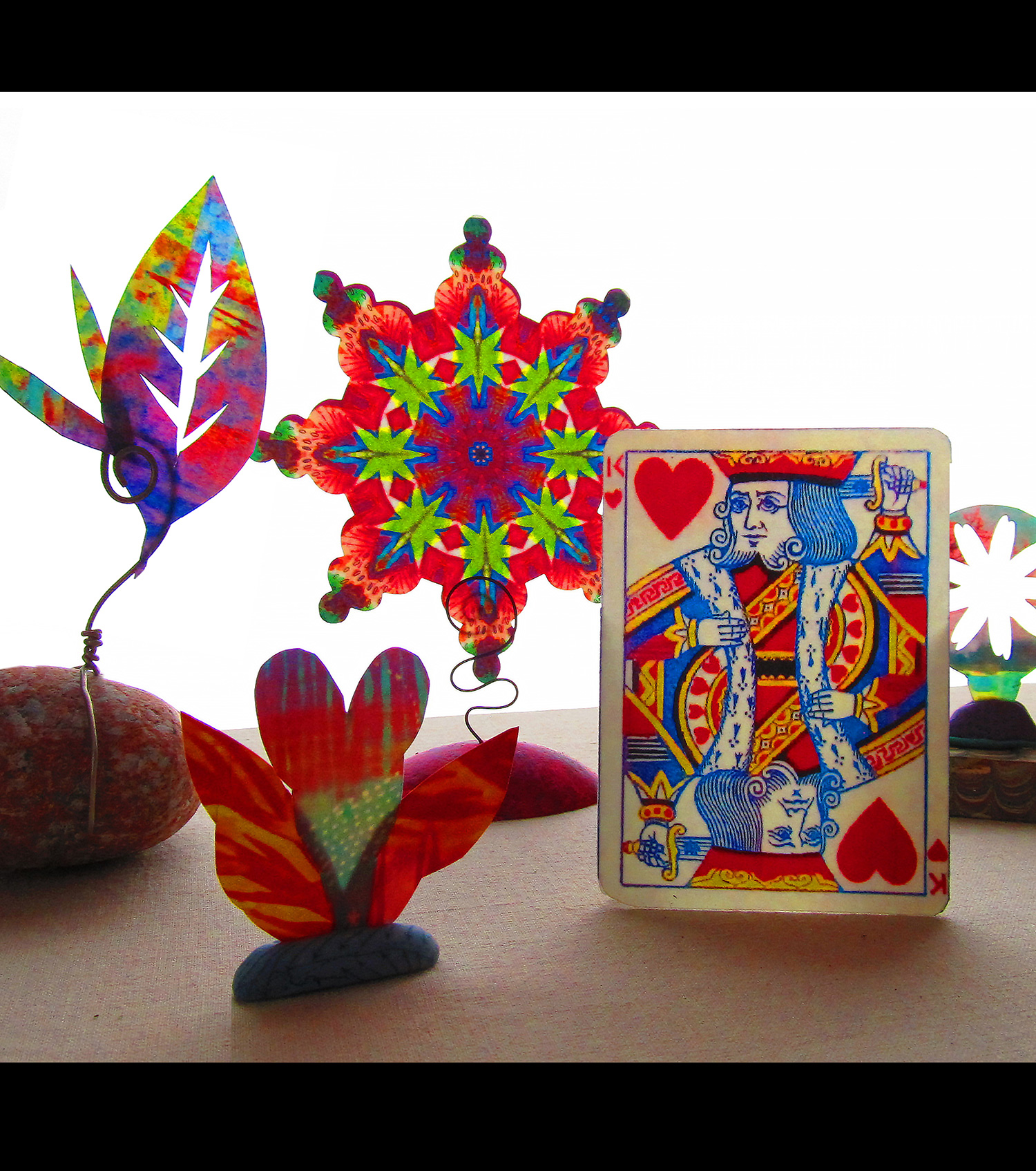
We played with a variety of ways to use encaustigraphics in an introductory class offered at the Kalamazoo Book Arts Center on February 29, 2020.
We began by learning how to make the e*graphics with provided prints, and then branched out into using the material to create “super simple sculptures” with fun and easy techniques. We experimented with the many ways the material can be used— for sculpture, window art, books, jewelry and more— and then we worked with the students’ own images (digital photographs and scans of artwork) to translate those into various creations. I also demoed how to construct large forms like those shown on the home page of this site.
Great group of students and a fun creative time. If social distancing allows, I’ll be offering the class again in November 2020.


The e*graphics intro class is upcoming on February 29 at Kalamazoo Book Arts and we’ll be exploring both flat and dimensional forms. A great bridge between the two is to display your 2D e*graphic creations with a creative base.
Nearly anything can be repurposed as a base for displaying your e*graphics. Whether your style is rough or refined, large or small, the light weight of e*graphics allow them to float or be captured by minimalist frames. Below are some examples— the top photo shows a woodtype block with a heavy copper wire bent into a spiral and an oak leaf held by a cast pyramid; the photo below shows frames made from plaster, polymer clay and twisted roots from the beach.

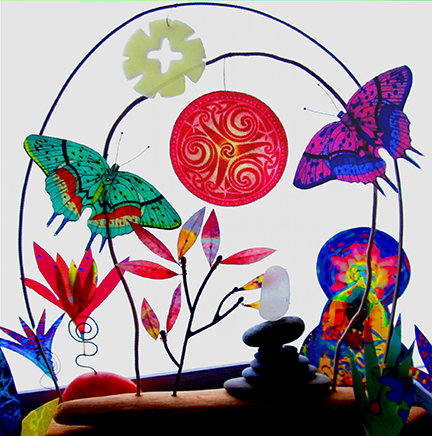
As I experimented with fantasy feathers and leaves for the upcoming e*graphics class at KBAC, I came across some vintage butterflies that made me wonder if I could create something that was an adequate testimony to their beauty. This was the result…

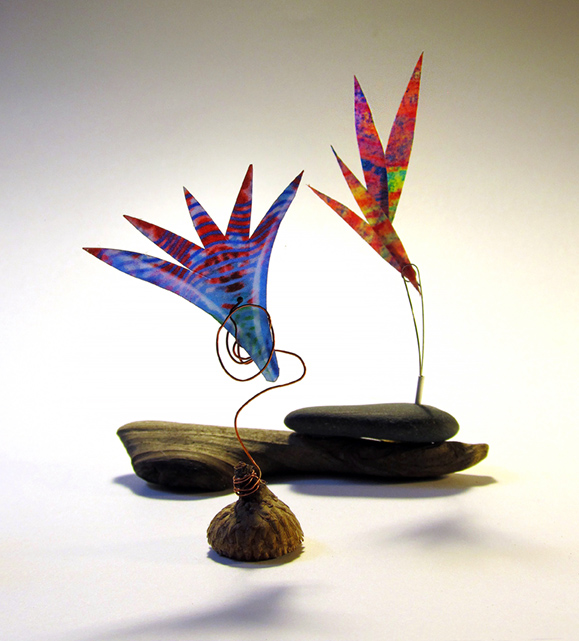
I’ve created an advanced class for encaustigraphics that carries the medium into moveable and three dimensional forms. One of my favorite new ways to play with e*graphics is Super Simple Sculpture, where the light weight of e*graphics allows you to use almost anything as a base. Here, driftwood and a small stone, or even an acorn cap, with light wire support, allow free improvisation to experiment with ideas and make a small village of playful artworks.

The next e*graphics class is scheduled for October 8 at Kalamazoo Book Arts. I’ll be sharing lots of new e*graphic forms, including mobiles and sculptural 3D forms, as well as the windows art and simple hanging forms from previous classes. Contact KBAC to register

Encaustigraphics are an interesting medium for accordion books. You can easily bind pages or sections with sewing (either using a machine or by hand) or taping (colorful washi tapes or even “invisible” tape), but the material also scores cleanly to create crisp folds. Below are two examples created for an upcoming class at Kalamazoo Book Arts Center—the first shows a layout that uses the idea of discrete “pages” or sections, and the second features a long flow of imagery divided intuitively and then cut and shaped to create a very sculptural book.
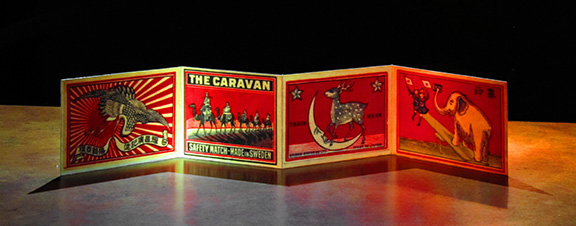
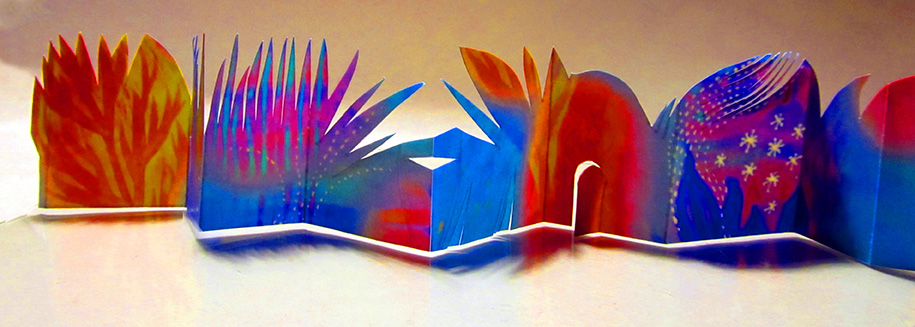
I have so many e*graphic mandalas in my windows, they look like a garden — and they’re beautiful in any light! {all images E.King; “Kalamazoo” calligraphy by Yves Leterme}